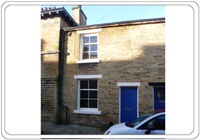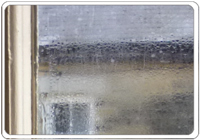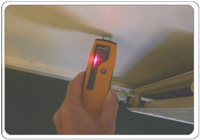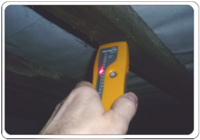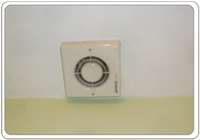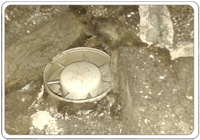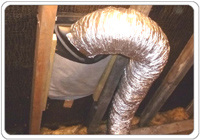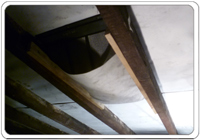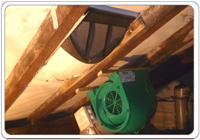
Case study: A mid-terrace in the Saltaire world
heritage site with condensation and mould problems
The problem
Occupied by one, and often two people, this mid-terrace property presented some interesting problems. With condensation on the windows and mould on the bedroom walls the tenant understandably was not happy with the living conditions in the house. We also found the plasterwork was excessively damp on the chimney breast in the master bedroom and the living room.
Since the property is in a world heritage site we did not want to make any external changes to the building that contravened the rules governing allowable changes. This presented a particular challenge.
The dampness in the area of the chimney breast was clearly a problem with the chimney itself and we were able to advise the landlord to seek specialist help to rectify this problem.
The bigger issue was with the air quality in the house and we found several areas that needed attention.
- The extract fan in the bathroom was a cheap unit and not very effective.
- The fan simply vented straight into the loft since the installer could find no way of venting the humid air to the outside
- We were interested to learn the property had been re-roofed in the last year or so. The original slate covering would obviously have had no underlay, however when the slates were replaced a modern 'breathable' white underlay (see pictures) was installed first.
- The sash windows were air-tight and provided no ventilation. but because of the world heritage status we were unable to modify them.
- The moisture content of the roof timbers was extremely high (see picture) which indicated there was a severe lack of ventilation in the loft and this would ultimately mean the roof timbers would suffer from wet rot, dry rot, or be damp enough to allow woodworm to thrive.
Our solution
Removing the humid air from the bathroom in an effective way was essential. Therefore we installed a good quality extract fan controlled by humidity - so it does not rely on the tenant to switch the bathroom light on to activate it.
We used insulated ducting to connect the bathroom fan to an extract vent installed under the roof slates (see picture). This meant humid air from the bathroom was completely removed from the property and not simply vented into into the loft.
We installed vents under the slates to bring fresh air into the loft. The effect of this measure can be quite dramatic as it brings an immediate improvement in air quality in the loft.
We also installed a whole house ventilation system to bring the fresh air from the loft into the landing area. The unit is set to bring just enough air into the house to bring humidity levels down to a level where condensation is removed and mould can no longer survive.
Several weeks later we returned to the property to check the equipment and re-tested the moisture content of the roof timbers, Where our original readings had shown 70-80% moisture, the same timbers were now showing 17-18% and we would expect that level to fall further to around 10% as the timbers continued to dry out.
By removing humid air from the bathroom to the outside of the property, venting the loft space and bringing a controlled flow of fresh air into the house we were confident the changes would transform the living conditions in the property.
The tenant's reaction ? he was very happy -
"I don't know how you've done it but its made a huge difference"
See our page on solutions for condensation problems for further information.
High humidity + inadequate ventilation
= damp, condensation, mould

UK government advises:

